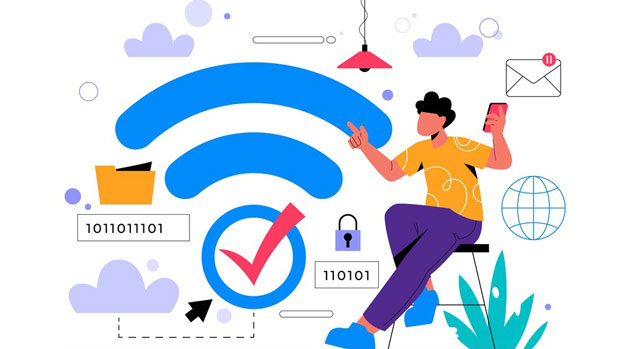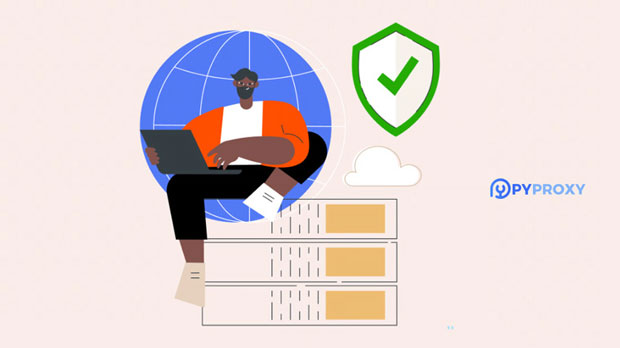In the modern digital landscape, proxies play a crucial role in maintaining privacy, circumventing geographic restrictions, and enhancing security. One common form of proxy is the static proxy, where the user's IP address remains constant during the session. This article explores the reliability of PYPROXY proxy in the context of static proxy mode, especially considering its "cheap" variants. We will analyze both the potential benefits and drawbacks, with a focus on how such proxies impact users, whether individuals or businesses, and whether they can be trusted to meet the needs for reliable, secure internet browsing. Understanding Static Proxy ModeA static proxy functions by assigning a fixed IP address to a user, which remains unchanged throughout their online session. This contrasts with dynamic proxies, where the IP address changes periodically. static proxies are often preferred for activities that require consistent access, such as online marketing, data scraping, or any task that benefits from maintaining a stable IP.Advantages of Static Proxies:1. Consistency and Reliability The key advantage of static proxies is their reliability. Since the IP does not change, they are ideal for tasks requiring long-lasting sessions without interruption, such as logging into accounts, managing multiple social media accounts, or conducting research over an extended period.2. Reduced Risk of Blocking Many websites use IP-based restrictions, and changing IPs frequently (as dynamic proxies do) can sometimes trigger security mechanisms that block the user. A static proxy minimizes this risk, making it more suitable for long-term usage.Drawbacks of Static Proxies:1. Vulnerability to Detection A consistent IP address, while helpful for continuity, can be easily flagged by websites, especially those employing advanced monitoring systems. This may increase the risk of being blacklisted if the proxy’s use is identified.2. Limited Anonymity Since the same IP address is used across sessions, it may not offer the same level of anonymity as rotating proxies. Websites may track the IP address over time, thereby compromising user privacy.Exploring Pyproxy: Cheap Yet Reliable?Pyproxy is a commonly used tool for proxy management, offering various types of proxies, including both static and dynamic options. The "cheap" variants of Pyproxy proxies are often marketed as an affordable solution for users looking for anonymity and bypassing geo-restrictions. However, the question remains: Are these cheap proxies reliable, especially under static proxy mode?Cost vs. Reliability Trade-off:One of the primary concerns with cheap proxies, whether static or dynamic, is the potential compromise on quality. The cost savings often come at the expense of reliability, speed, and security. This issue is even more pronounced in static proxies, where a consistent IP address is crucial. Cheap proxies may suffer from overcrowded servers, which can lead to slow speeds, high latency, or even downtime.Server Quality and Maintenance:Cheap proxies are often associated with lower server maintenance standards. Over time, proxies that are not adequately maintained may become more vulnerable to failure or less effective at evading detection. This makes the use of a cheap static proxy a potential risk, especially for critical tasks such as secure browsing or scraping.Security Concerns with Cheap Proxies:Another important factor to consider is the security risks associated with cheap proxies. Some low-cost proxy providers may not encrypt traffic effectively or may sell proxies to multiple users, increasing the likelihood of data leakage or compromise. For users who prioritize security, the reliability of a cheap static proxy might fall short of expectations.Impact on User ExperienceThe experience of users relying on cheap static proxies can vary depending on the nature of their tasks. Let’s break this down into different user scenarios:For Businesses and Data Scraping:Businesses involved in large-scale data scraping or market research often require high reliability and minimal downtime. In such cases, a cheap static proxy might be unsuitable, especially if it causes delays or unreliable connections. A better investment would be in premium proxies that guarantee uptime, faster speeds, and better customer support.For Casual Users and Social Media Management:For casual users, such as those managing social media accounts or watching geo-restricted content, a cheap static proxy might suffice. However, the risk of IP detection and subsequent blocking may still be an issue. Users in this category should be cautious and weigh the benefits of cost savings against the potential frustration of proxy failures or slow speeds.For Security-conscious Users:Security is a major concern for individuals concerned about privacy, such as those who frequently handle sensitive information. For these users, relying on cheap proxies might expose them to risks such as data theft or security breaches, as cheap providers might not invest in the necessary encryption and data protection measures.Alternatives to Cheap Static ProxiesIf the reliability of cheap static proxies is in doubt, there are several alternatives to consider:1. Premium Proxy Services:Investing in a premium proxy service ensures better performance, security, and reliability. These services often come with better encryption, customer support, and quality assurance, making them a safer choice for tasks requiring constant IP use.2. Rotating Proxies:For users who want both anonymity and consistency, rotating proxies can provide the best of both worlds. They offer a changing IP pool while still maintaining some level of reliability, ideal for tasks like data scraping and web scraping where multiple IPs are needed.3. VPNs (Virtual Private Networks):While not exactly the same as proxies, VPNs provide a high level of security and anonymity by routing traffic through private servers. A good VPN can offer the stability of a static connection with the added benefit of encryption and security.Conclusion: Is Pyproxy Proxy Cheap Reliable in Static Mode?In conclusion, while Pyproxy’s cheap static proxies might be a viable option for casual users or those seeking to bypass geo-restrictions on a budget, they are not always the most reliable choice for tasks requiring consistent performance or high security. The trade-off between cost and reliability is significant, and users must weigh their need for speed, security, and stability against the reduced cost.For businesses or individuals who require more robust and secure solutions, investing in premium proxies or rotating proxies may be a more effective choice. In the end, while cheap static proxies can serve certain purposes, they may not always deliver the quality that more demanding users require. Therefore, users must carefully assess their needs before choosing a proxy service, particularly one that is marketed as "cheap."
Oct 21, 2025



































































